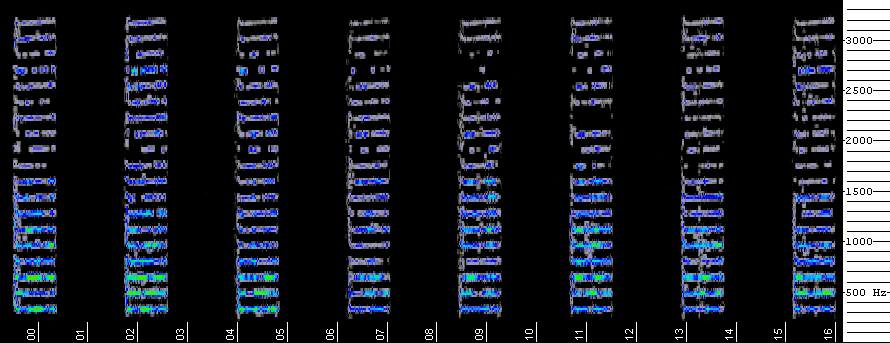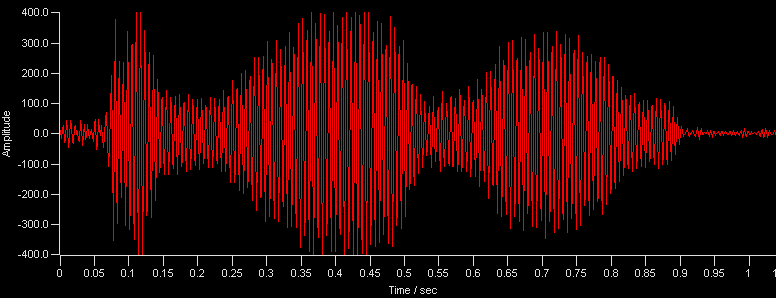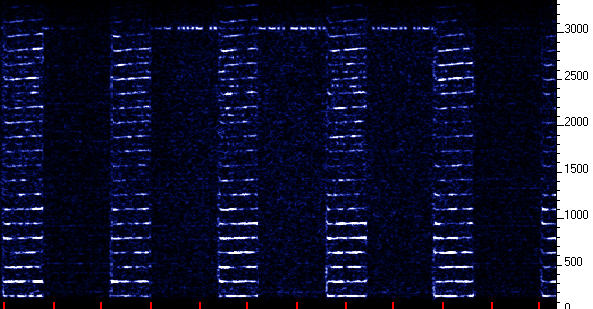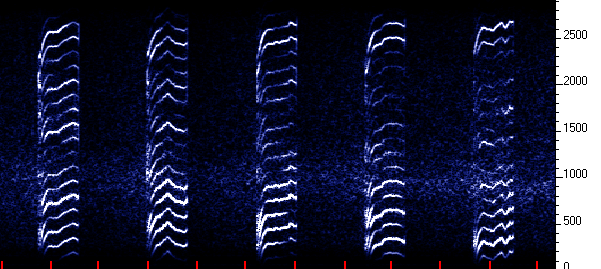Russian Military "Buzzer" (XB/S28/"UVB 76")


2010 has seen a considerable buzz on the Russian "Buzzer" station, which has been blatting away since 1982 or so. This plot shows the extremely harmonic nature of the audio tone, which repeats approximately every 2.2 seconds. Harmonics go out considerably farther than 3500 Hz, but that was the limit of the audio passband.
Note the upward drift in the audio frequency (this was tuned in AM, carrier on 4625 kHz). It becomes quite obvious in the higher harmonics, and it is partly the reason for The Buzzer's unique sound.

This triggered amplitude plot shows the change in each buzz over time. Due to ionospheric fading, some are easier to see than others. Each buzz has three distinct events: a rapid attack with some transient distortion that decays toward the fundamental; a sustain that simultaneously drops in amplitude while rising slightly in frequency; and a second rise leading immediately to a slow decaying cutoff. This also gives the Buzzer its sound.

The purpose of this ARGO plot is to show the Morse code signal 3.1 kHz off frequency. This is often audible through the buzz. It sends a formatted string of characters in straight CW once per minute. These begin with the short break symbol (-...-). They contain a local time stamp, and pad missing data characters with question marks (..--..). The source is suspected to be an old Russian Air Defense (PVO) system that sends automated target tracking data. Other Morse has been heard 1 kHz off, usually around 1900 UTC. This is a Russian military tactical net of some sort.

The Buzzer had many spurious emissions in 2010. This one was on 4668 kHz. Note how the fundamental signal's predictable audio changes go completely crazy on this spur. 4625 and surroundings remain very active frequencies for voices (ENIGMA S28), Morse code, and other Russian strangeness.
Plots made with Spectrum Lab and ARGO.